Abstract
The effects of extracellular nucleotides and agents which elevate intracellular cyclic adenosine 3′,5′-monophosphate (cyclic AMP) concentrations on human lymphocyte metabolism have been studied. Aminophylline, isoproterenol, and prostaglandins, all of which elevate lymphocyte cyclic AMP levels, inhibited incorporation of 3H-labeled thymidine, uridine, and leucine into the DNA, RNA, and protein of phytohemagglutinin (PHA)-stimulated lymphocytes. Aminophylline inhibition was maximal only when the inhibitor was added within 1 hr after exposure of cells to PHA, suggesting that a relatively early step in the lymphocyte transformation process may be affected.
The addition of various nucleotides to the culture medium also inhibited incorporation of labeled precursors. The best inhibitor, dibutyryl cyclic AMP (DU cyclic AMP), produced maximal inhibition only if present during the 1st hr after initial exposure to PHA. Among the various cyclic nucleotides derivatives of guanosine and adenine were the most effective inhibitors (substantial inhibition at 0.1 mM concentrations). However, the inhibition was not specific for nucleotides containing the cyclic phosphodiester moiety since the tri-, di-, and monophosphates of adenosine and guanosine were equally effective in diminishing thymidine uptake. The above inhibitions were not due to secondary effects of the inhibitors on the interaction of PHA with lymphocytes as judged by 125I-labeled PHA binding studies.
Low concentrations (1-10 μmoles/liter) of cyclic AMP produced slight stimulation of thymidine-3H uptake in resting lymphocytes (lymphocytes not stimulated with PHA). However, the effects were quite small as compared with those produced by PHA itself. Attempts to demonstrate increased thymidine uptake 48 hr after pulsing lymphocytes with aminophylline or isoproterenol were unsuccessful. The relationship of these observations to a possible regulatory role for cyclic AMP in PHA-stimulated lymphocytes is discussed.
Full text
PDF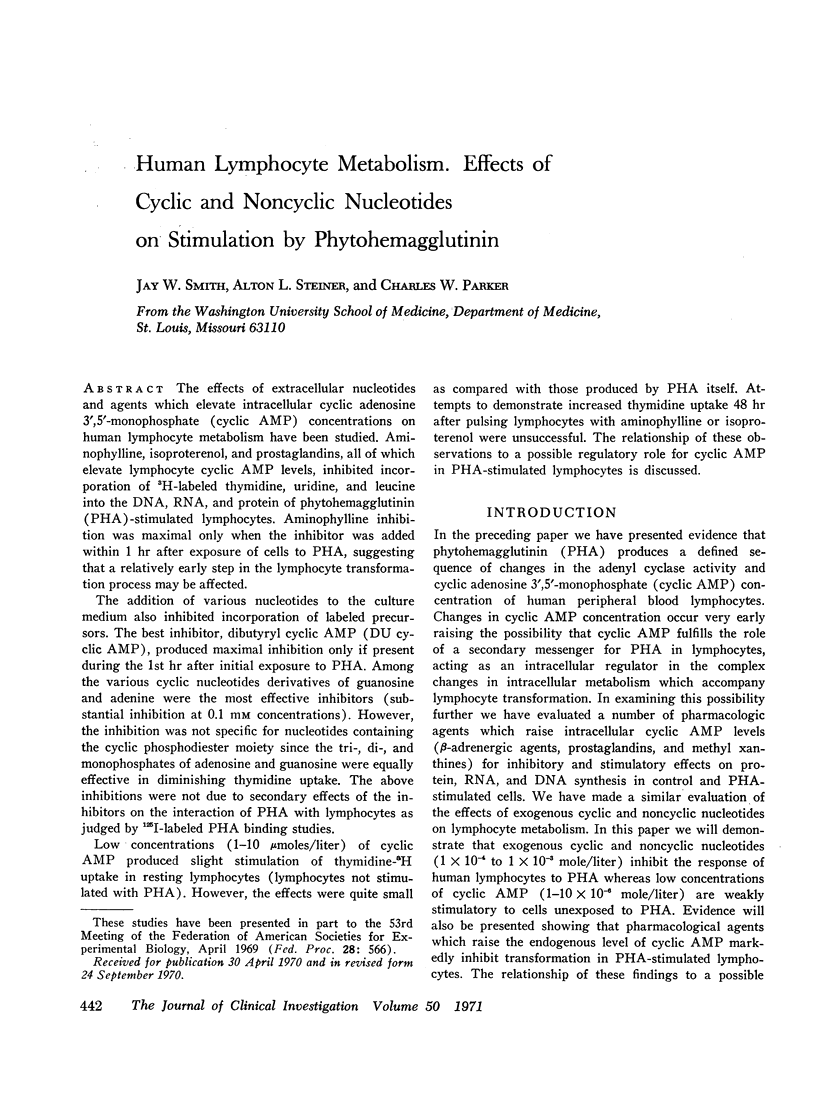

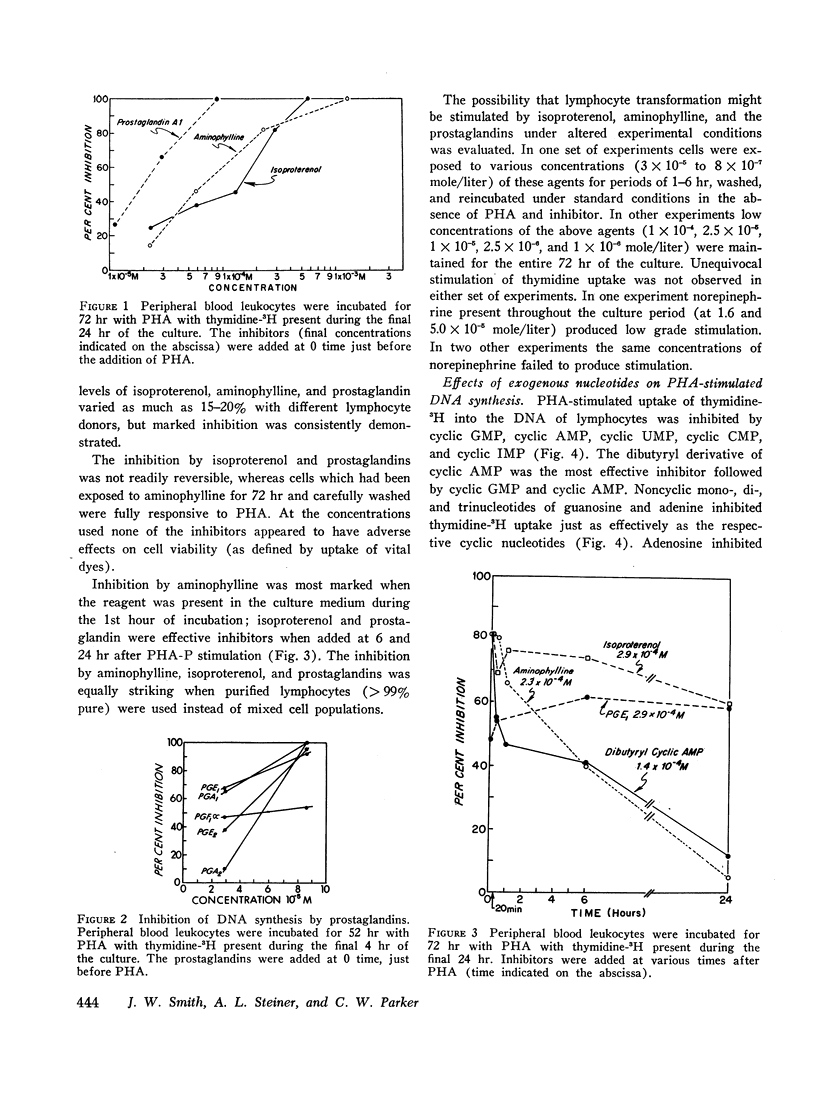
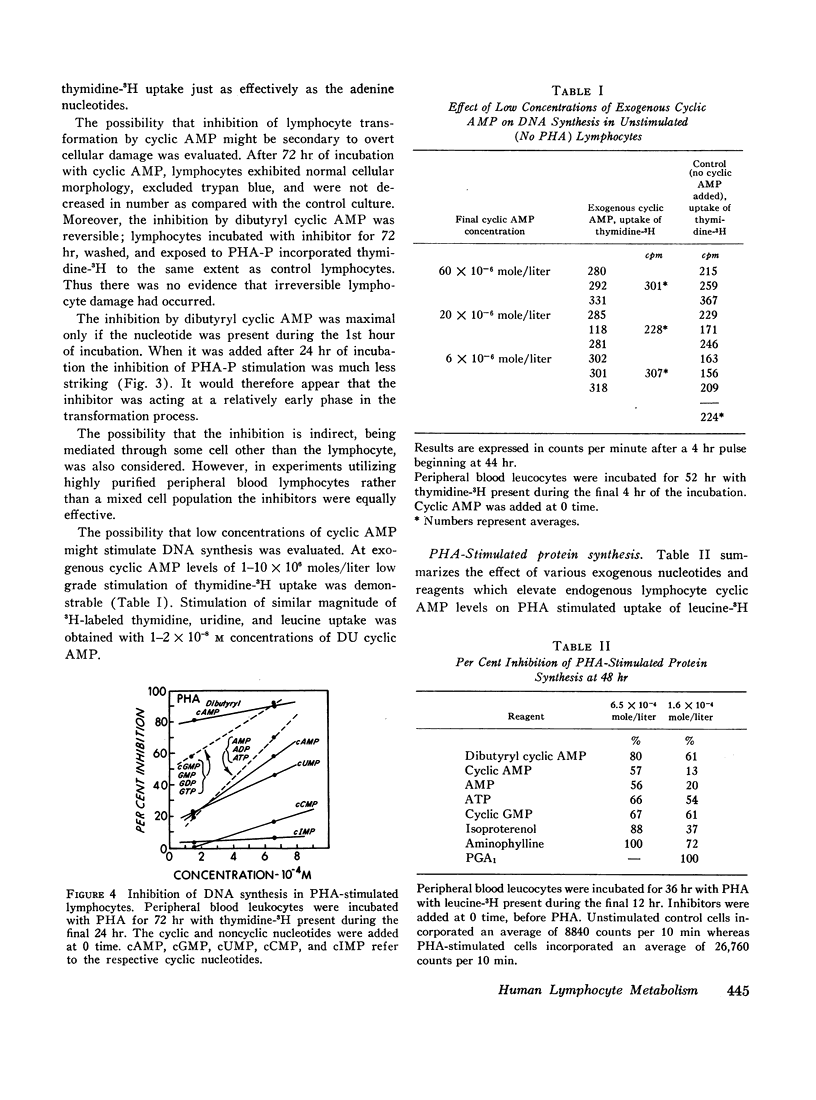
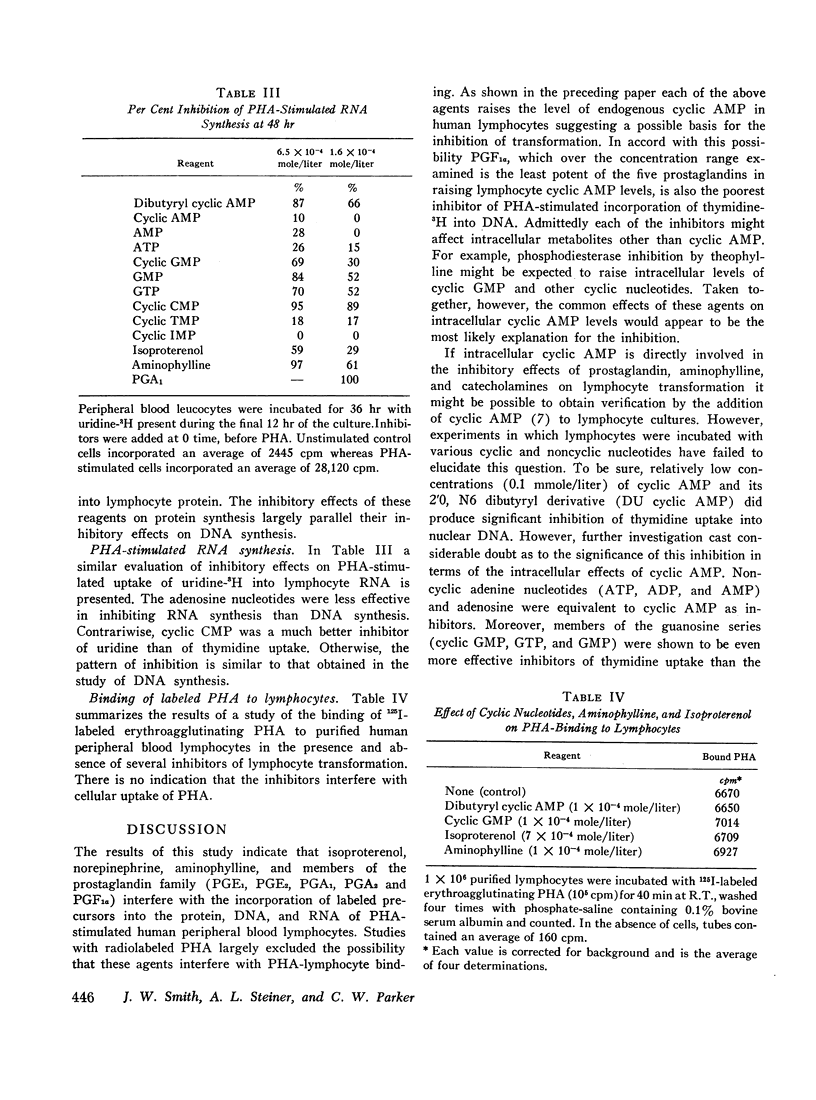
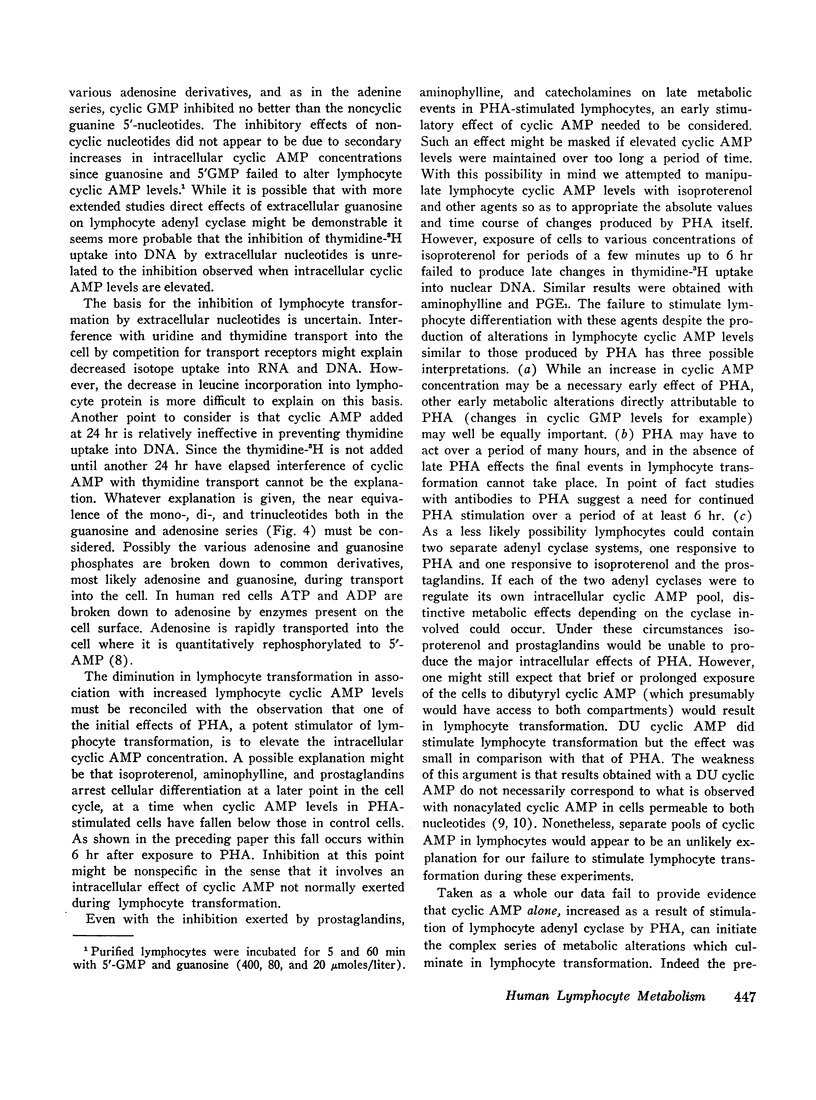
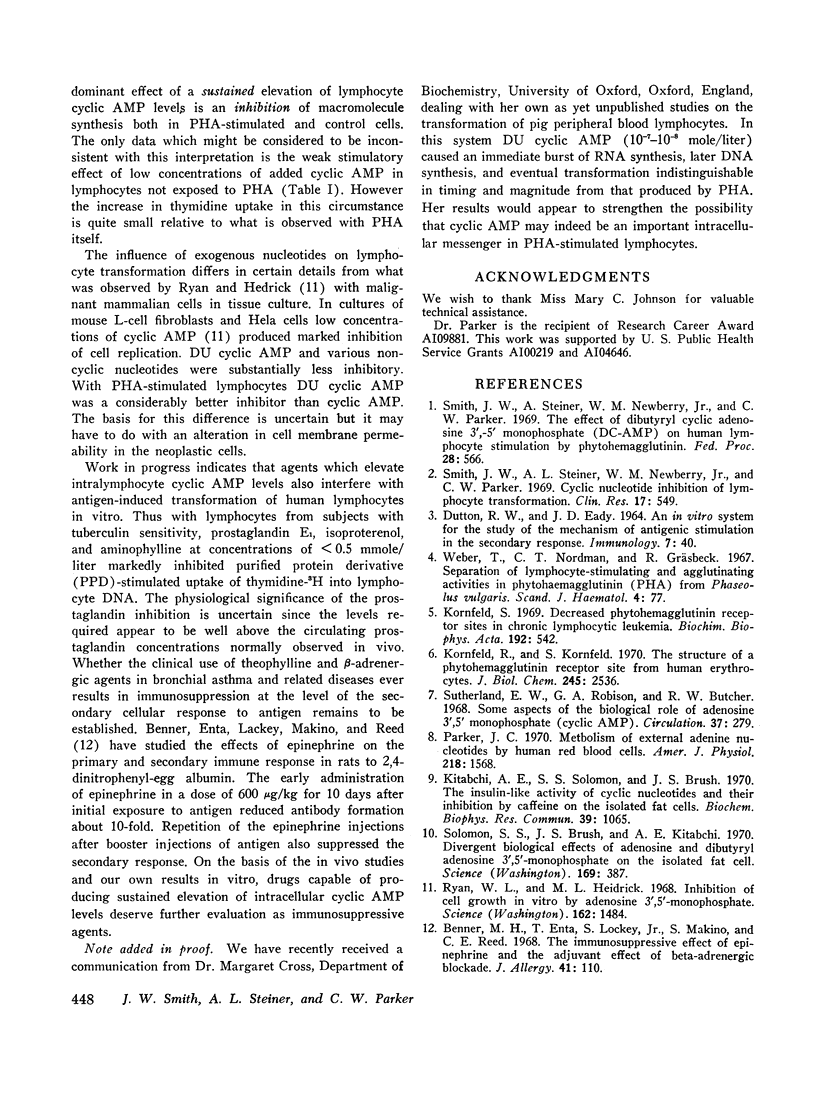
Selected References
These references are in PubMed. This may not be the complete list of references from this article.
- DUTTON R. W., EADY J. D. AN IN VITRO SYSTEM FOR THE STUDY OF THE MECHANISM OF ANTIGENIC STIMULATION IN THE SECONDARY RESPONSE. Immunology. 1964 Jan;7:40–53. [PMC free article] [PubMed] [Google Scholar]
- Kitabchi A. E., Solomon S. S., Brush J. S. The insulin-like activity of cyclic nucleotides and their inhibition by caffeine on the isolated fat cells. Biochem Biophys Res Commun. 1970;39(6):1065–1072. doi: 10.1016/0006-291x(70)90667-4. [DOI] [PubMed] [Google Scholar]
- Kornfeld R., Kornfeld S. The structure of a phytohemagglutinin receptor site from human erythrocytes. J Biol Chem. 1970 May 25;245(10):2536–2545. [PubMed] [Google Scholar]
- Kornfeld S. Decreased phytohemagglutinin receptor sites in chronic lymphocytic leukemia. Biochim Biophys Acta. 1969 Dec 30;192(3):542–545. doi: 10.1016/0304-4165(69)90409-7. [DOI] [PubMed] [Google Scholar]
- Parker J. C. Metabolism of external adenine nucleotides by human red blood cells. Am J Physiol. 1970 Jun;218(6):1568–1574. doi: 10.1152/ajplegacy.1970.218.6.1568. [DOI] [PubMed] [Google Scholar]
- Ryan W. L., Heidrick M. L. Inhibition of cell growth in vitro by adenosine 3',5'-monophosphate. Science. 1968 Dec 27;162(3861):1484–1485. doi: 10.1126/science.162.3861.1484. [DOI] [PubMed] [Google Scholar]
- Solomon S. S., Brush J. S., Kitabchi A. E. Divergent biological effects of adenosine and dibutyryl adenosine 3',5'-monophosphate on the isolated fat cell. Science. 1970 Jul 24;169(3943):387–388. doi: 10.1126/science.169.3943.387. [DOI] [PubMed] [Google Scholar]
- Weber T., Nordman C. T., Gräsbeck R. Separation of lymphocyte-stimulating and agglutinating activities in phytohaemagglutinin (PHA) from Phaseolus vulgaris. Scand J Haematol. 1967;4(1):77–80. doi: 10.1111/j.1600-0609.1967.tb01601.x. [DOI] [PubMed] [Google Scholar]


